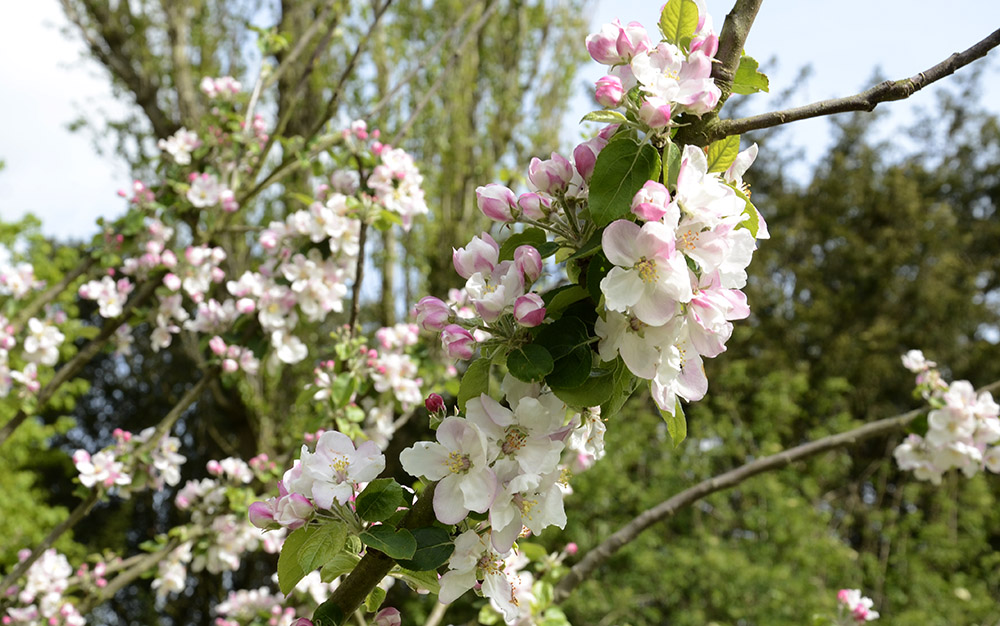At the mercy of the weather
The orchards are full of blossom at the moment and bees (hopefully) are busy. But all may not be well. I have just watched a Countryfile Spring report on fruit trees, pollinators and the threat of climate change. The item resonated with me as we have a chapter on orchards in the Climate Change Garden book and it’s not good news. Our fruit trees are so dependent on insects to pollinate their blossom and there is such a narrow window of opportunity – it’s just a week or so for insects to find and pollinate the flowers before they die, so wind and rain at the wrong time means the pollinators are not out. Or it could be that the blossom opens too soon before the bees are active and this is happening a lot. As we see earlier springs, the chances of a mis-match between blossom and bees increases. The result – less home-grown fruit from the UK, more imports and more costly food.
But there’s another problem. Fruit trees are put in pollination groups, from early to late flowering so when you plant fruit trees you need to make sure there is a pollination partner in the orchard. Some are self-fertile but the triploids need two partners and you need a partner in the same group or overlapping group. But growers report seeing varieties respond differently to the early spring with group 1 pollinators coming out late and group 5/6 being early and overlapping – its truly mixed up. My Court Pendu Plat is a late-flowering group 6 and good for frosty areas. However, it’s not self-fertile so it needs a pollination partner – its limited at the best of times, but when pollination is pulled forwards there may not be much left to pollinate it. At the moment in early May my Court Pendu Plat, Court of Wick and Sunset are yet to flower – they are groups 6,4, 3
And it’s all change at the end of the season too. As reported on the programme, fruit growers are harvesting their fruits almost a month earlier that just 30 or 40 years ago. Nowadays harvest can be all over by the end of September, whereas in the 1960s it would have only just began. That’s a frighten change in such as short time frame.
So what can the gardener do? Honey bees are not the only pollinators, bumble bees, and solitary bees especially are pollinators too, as are hoverflies. So make sure there are plenty of habitats for these insects to overwinter nearby. Having a diverse range of fruit trees is important too, some flowering earlier and others later so you ‘hedge your bets’.
First published on The Climate Change Garden website




